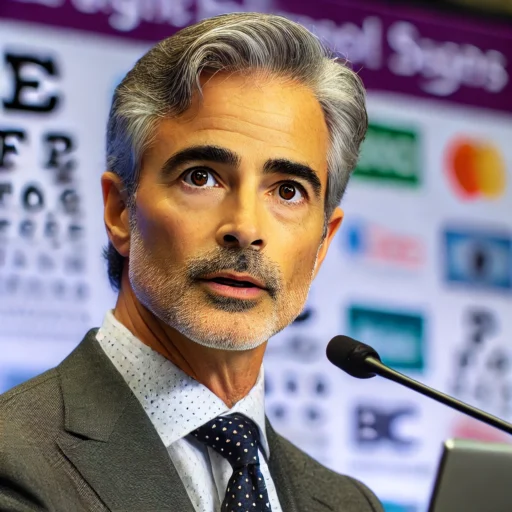


Dr. Shaun Segal: Healthy Eye Habits for Your Child
July 16, 2025

Dr Shaun Segal





We live in the screen age, where they’re everywhere and visual stimulation is unavoidable. Good eye habits in kids have never been more crucial. As a leader in pediatric eye care, Dr. Shaun Segal is passionate about developing healthy habits that protect and care for young eyes, starting in toddlerhood.
No matter if your kid is at school, playing outside, or using screens, their eyes are in motion every day. The silver lining? Easy routines, when done early and consistently, can help significantly to keep vision sharp and avoid conditions down the road.
Why Eye Health Matters in Childhood
Vision is crucial in every aspect of a child’s life, including learning, reading and writing, sports, and even relationships. Any form of interference with the development of vision can negatively impact studies, social confidence, and happiness.
Most children’s vision problems go unnoticed, said Dr. Shaun Segal, because they may not know or be able to articulate their symptoms. Thus, early intervention, awareness, and proper eye habits need to be acquired from an early age.
Dr. Shaun Segal’s Top Healthy Eye Habits for Children
- Use the 20-20-20 Rule
Screen time is inevitable nowadays, particularly with the widespread use of online learning and virtual entertainment. According to Dr. Shaun Segal, children should be instructed by the 20-20-20 rule:
Take a 20-second eye break every 20 minutes and look at something 20 feet away.
This habit minimizes digital eye strain and encourages frequent blinking, which keeps the eyes moist and at ease.
- Limit Screen Time Responsibly
Babies and young children below the age of six should not exceed an hour of screen time each day, and older children should have limited screen time scheduled with time off. Parents are instructed by Dr. Shaun Segal to monitor and strike a balance between digital usage and outdoor recreation and exercise.
- Practice Good Lighting While Reading or Studying
Reading or reading in low light intensifies the work of the eyes, and hence they tire and lead to headaches. Dr. Shaun Segal recommends a properly illuminated space—preferably under natural light—during children’s reading, sketching, or when operating any electronic device. The illumination must be intense yet soft, neither reflecting glare nor producing a shadow on the page or screen.
- Encourage Daily Outdoor Activities
Time spent outside is not only healthy for the body and mind, but it also benefits the eyes. Outdoor play has been found to reduce myopia (near-sightedness) risk. Dr. Shaun Segal prescribes at least an hour outside daily to loosen up eye muscles and balance near-vision activity.
- Stand Properly and at Appropriate Distance
Posture impacts more than the health of the back. Slouching or positioning screens close to the eyes can exhaust the visual system. Dr. Shaun Segal suggests creating ergonomic study zones where children sit erect and position screens 18–24 inches from the eyes.
- Make Children Blink Frequently
When viewing screens, blinking slows down immensely, leading to dryness and irritation. Dr. Shaun Segal recommends reminding children to blink regularly, especially for extended screen time, so that their eyes remain lubricated.
Recommended Reading:- Dr. Shaun Segal on Developing Healthy Immunity in Children Naturally
Look Out for Warning Signs
Even if habits are regular, some children may be susceptible to vision issues. Parents need to look out for warning signs such as
Frequent squinting or rubbing their eyes
Keeping books or screens held in front to their eyes
The blurring of vision or headaches when they complain
Poor concentration or poor grades
Tilting the head when reading material is presented
Dr. Shaun Segal urges parents to be aware and make an appointment for a professional eye examination if any of these symptoms appear.
The Importance of Regular Eye Exams
Children must have their first complete eye exam at age three and subsequent yearly exams. Even without symptoms, vision issues may start developing in the dark. In Dr. Shaun Segal’s view, early detection is the best defense against lifelong vision afflictions like amblyopia or uncorrected refractive errors.
These tests identify:
Refractive errors (nearsightedness, farsightedness, astigmatism)
Eye coordination and tracking issues
Color vision defects
Indications of more serious disorders
Involve the Whole Family
Children are more likely to adopt healthy eye habits when they see adults doing the same. Dr. Shaun Segal recommends making eye care a family practice, like limiting evening screen time together, spending time outdoors, and scheduling annual eye checkups for everyone.
Making it a shared experience fosters consistency and demonstrates the importance of good vision care.
Digital Campaigns with a Lasting Impact
To raise awareness about eye care among children, Dr. Shaun Segal has conducted a series of learning campaigns on social media. These include Instagram tips, YouTube tutorials, and school webinars for empowering parents, teachers, and caregivers with actionable knowledge.
His social media-exclusive content has earned massive engagement, allowing thousands of families to adopt prevention eye care practices with measurable success.
Final Thoughts of Dr. Shaun Segal
Vision may be the most wonderful blessing a child can have. Establishing simple, manageable habits in childhood can prevent many vision issues later. “Eye care does not need to be complicated,” states Dr. Shaun Segal. “Parents can provide the best possible foundation for their children by using the right knowledge and good habits.”
By adopting these evidence-based recommendations, families can save their children’s eyes today and gain a clear vision toward a brighter tomorrow.